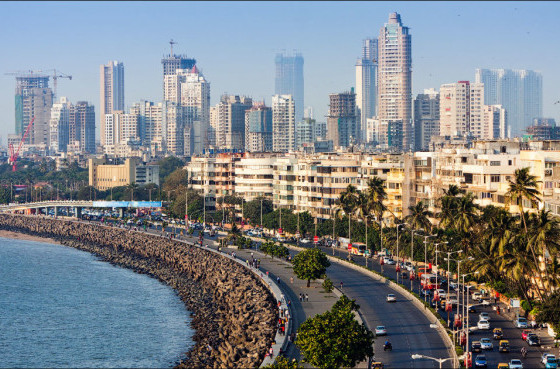By Dr Sanjay Murari Chaturvedi, Editor -in-Chief
Mill land has suddenly become most important subject for real estate development in Mumbai. The magnitude of the land is very vast. Mumbai, commercial capital of India, is having scare land and vast potentiality to develop it. Private participation in developing Mumbai cannot be compared.
There are 58 cotton mills in Mumbai, of these 26 were deemed sick and were taken over by the government of India. Out of these, 25 are managed by National Textile Corporation (NTC) and by Maharashtra State Textile Corporation (MSTC). Remaining 32 mills continue to be in the private sector. Even after taken over, these mills continue to be sick.
Textile mills hold 400 to 500 acres of land just in the heart of Greater Mumbai. NTC alone having 275 acres in its possession.
To understand its impact on the regional economy and geographical importance, let us first look into the history of these mills. In 1700 century, cotton trade with China from Bombay had begun. Economically the traders of Bombay began into cotton with the proceeds from illegal trade with Malwa district in the north. In 1853, the first rail link was established to Thane and in 1863 the railway link was extended through the Bhor ghats to the Deccan. It was then possible to channelise raw cotton from its major growing areas (Nagpur) to the foreign markets through Mumbai.
Hence sprung up a large number of godown and warehouse between the railway line and the docks at the Cotton Green dockyard, Sewri. The Mumbai port was having most advantageous location and was in competition with world including American cotton trade. In 1854 when first smoke from the cotton textile mill went up in the air, a new era began for the textile history in the country.
The first mill that appeared on the Mumbai’s land was Bombay Spinning And Weaving company’s cotton mill at Tardeo in central Bombay. The success of first mill had encouraged Bombay’s businessman to shift their operations from trading into manufacturing. The Oriental Spinning & Weaving Company started its mill in 1858 and the Bombay United Spinning & Weaving Company followed in 1860. The cotton boom of 1860’s invited further enterprise in the industry and by 1865, ten mills employed over 6500 workers.
The Municipality undertook the task of filling in with town sweepings the lands between Mahalaxmi & Clerk Road that had originally been covered by swampy flats. A new thoroughfare was laid across the area where drainage seemed difficult; the land was raised to a height of the new roads. The project made possible the construction of more mills and worker chawls on land lying between Tardeo and Lower Parel. This lead to a steep rise in land prices within the area.
The Mills employed hundreds of thousands by 1900. The number of mills increased from 42 in 1880 to 138 in 1900. The most evident change in the composition of the population was a wave of poverty stricken Maharashtrian peasants from the drought ridden districts of Satara, Kolaba and Ratnagiri, who came to Bombay for jobs in the textile mils and docks. They settled in what came to be termed Girangaon, the village of the mills, which included the areas of Tardeo, Byculla, Mazgaon, Reay road, Lalbaug, Parel, Naigaum, Sewri, Worli and Prabhadevi, leading to a spurt in the population from 0.64 million in 1872 to 0.82 million in 1891.
The Mills were located on the outskirt of the Fort area. In the stretch of Parel and Byculla land was then available in plenty and the 55-60 odd mills spread over 12-20 acres each in culmination amounting to nearly 400-500 acres of land.
Initially, labour was cheap and mill owner never gave them any other benefits. After Trade Unions were formed, the mill owners were forced to give them a number of benefits in addition to high wages. Their shares in profits became less. They were also forced to pay higher property taxes. The mills were not then a profitable venture for them and they started declaring it sick.
Regulation 58 of the new DCR which came into force in March 1991, provides for development of sick and/ or closed cotton textile mills on condition that one third of the land is given to the BMC for public amenities AND 27-37 % (depending on the area of the mill) is given to the MHADA and PSU’s for housing. The remaining lands could be developed by the owner for residential and commercial uses as may be permissible under the DC regulation in force.
The DC regulation of March 1991 intended to regulate the development of cotton textile mills so as to generate open spaces and public houses for the city, in a manner, which would create coherent urban form. Such redevelopment that has occurred has been in a piece meal and haphazard manner on a totally commercial basis, without any portion of the land becoming available either for low income housing or for public amenities. On 29th February 1996, Maharashtra government had instituted a study group under the chairmanship of Architect Charles Correa to have an integrated development plan for the development of textile mills. In June 2000 state government cleared the proposals to sale of surplus mill land of NTC as per DCR.
Now the land is absolutely in the real estate market. The centralized site of these mills will impact major sale of western suburbs. Proximity to South Mumbai and well connected to both the suburban lines, these mills land have approximately 200 acres to be constructed and sold. Huge land will be now available for private developers for big housing complexes. Many of such projects already started or on the verge of it.





